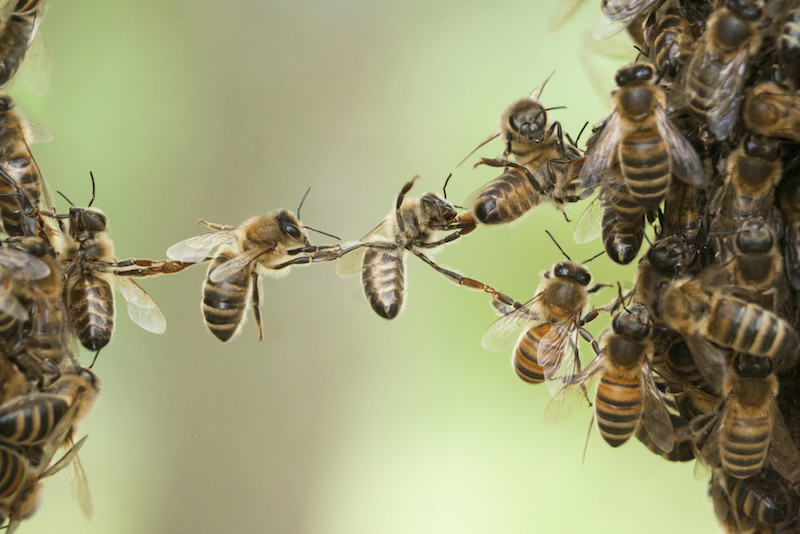Colonies’ organisation and hierarchy is a fascinating process to learn about. Each member of the hive has a specific role within the community to ensure social cohesion and survival. Besides the queen and male drones, the rest of the bees are known as worker bees.
Worker bees’ big tongues allows them to collect nectar while their back legs helps them collect pollen and propolis. They can also produce wax to build the hive. Their role in the hive depends largely on their age: young worker bees start by cleaning the hive, then they proceed to nurse and care for larvae, and finally they end their 30-to-50 days lives by going outside the hive and collecting what the colony needs (nectar, pollen, propolis…).
Here are a few information on the different types of worker bees,
that create a hierarchical and highly efficient system within the
beehive:
• Cleaning: Cleaner bees have two priorities. Firstly they have the
important responsibility of cleaning and preparing the honeycomb to
welcome the new generation of larvae, as the queen will only lay eggs in
cleaned alveolus. Cleaning one alveolus takes about 45 minutes and 30
different working bees! Secondly, they clean the hive of any debris,
from hair to falling pieces of brood.
• Nursing: Nurse bees feed and care for growing larvae. A nurse bee
examination of a larvae lasts around 20 seconds and each larvae can be
controlled up to 700 times a day. Bees require to be feed from the third
to the fifteenth day.
• Caring for the Queen: Beside caring and feeding the newborn bees, a group of worker bees do the same thing to take care of the queen, meaning feeding her, caring for her and keeping her company.
• Architect bees: Architect bees build the honeycomb necessary for the
colony’s development and survival. They mix wax with their saliva to
create a paste with which they build each cell, from the top of the
frames to the bottom.

